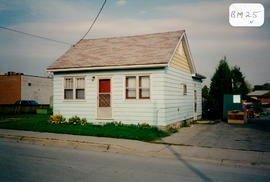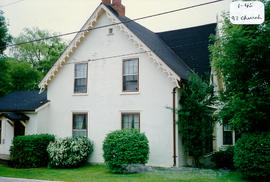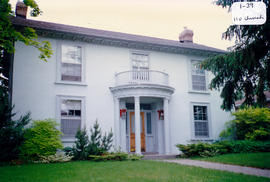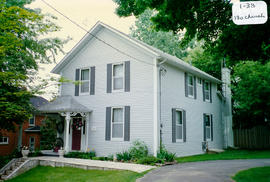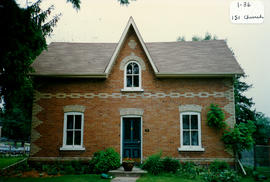- CA BWGPL GJ-HB-2017-03-15-12
- Pièce
- 1995
Fait partie de George Jackson fonds
This house is located at 232 Barrie St. (on the southwest corner of Barrie and Fletcher Streets). It was built around 1890 in the Eclectic Gothic Revival style. The two-storey, ‘L’-shaped building has a medium-pitched, gable roof and large, symmetrically-placed openings. The basic form is a Gothic Revival feature. The front corner porch with slender Doric columns and a decorative front pediment is a Classic Revival feature. There are coloured-glass transom lights above the main-floor, end gable windows. The structure has loadbearing, brick masonry construction and a parged, stone foundation. According to the 2000 inventory, the replacement doors and aluminum storm windows, as well as the porch floor, foundation and railing are unsympathetic with the original design. (1, 3)
Sans titre


